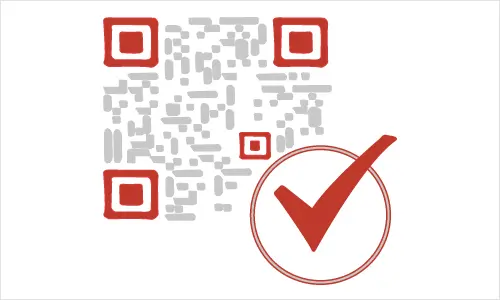QR Code is a useful tool that helps you connect your target audience from offline to online content. But like any other technology, QR Codes work only when used right. And many people take undue advantage of QR Codes by committing fraud.
Hence, you’re looking for a checklist of some common QR Code frauds and their solutions. That way, you can stay informed and make sure you don’t fall prey to them.
We have compiled an exhaustive list of common QR Code frauds that you must beware of:
A. The most common frauds associated with QR Codes
1. Don’t open links or scan QR codes from strangers
Imagine receiving an unsolicited message with a QR Code. Should you bother to scan it?
Probably not. Because simply scanning a random QR Code can lead you to a scam site. Or it could also give fraudsters unauthorized access to your smartphone in unwanted ways.
This is one of the most common QR Code frauds. The solution is pretty simple. You need to check the credibility of the sender and the QR Code. If you can’t, don’t scan it.
2. Check the credibility of legitimate sources.
Say you are receiving an electricity bill and it has a QR Code for payment. How do you know whether this QR Code is genuine or not?
The solution is to double-check and see if it indeed is. To do it, you can go to the official website to double-check if the electricity board really adds QR Codes to the bills.
Or you can contact a customer service representative regarding the same. This way, you know your money is going to the right person.
Generate a QR Code For Your Unique Case
START TODAY!
3. Think twice about following short links
You probably know what a Dynamic QR Code is. Unlike static QR Codes, dynamic ones do not store the target data directly in them. They rather store a redirecting URL that takes the end-users to the target data. This is called a redirecting URL or short URL which is given by your service provider.
These shortened links can also be used directly to take you to a malicious website. This can be done via unsolicited communications, friends, or family members if their device has been hacked.
To tackle this, you must click on the shortened link only if its source is reliable or known to you. If it isn’t from either one, don’t follow through with it.
4. Keep an eye out for tampering
Most hackers have been known to do tampering. And they do it by sticking their own QR Codes over legitimate ones. This leads to massive money frauds.
So, if you see any sign of forgery or replacement that looks questionable, don’t scan that QR Code.
5. Confirm the QR Code before scanning
Say someone known sends you a QR Code. It can be a message on social media from a friend or a workmate. How do you confirm this QR Code legitimately belongs to the person in question? Well, you don’t.
So the only thing you can do is double-check it by contacting that person directly before you scan the QR Code. It will help make sure that their account has not been hacked and you’re not being scammed.
B. Solution-Install mobile security
Other than keeping an eye and presence of mind, you can also install mobile security software such as McAfee Total Protection.
The online protection software can protect your mobile devices as well as your computers. It can help you detect spam or bad links associated with QR Codes.
Moreover, it can ask you to avoid them by raising a warning before accessing malicious sites and downloading files associated with them.
That’s all you need to know about QR Code fraud. In case you’re planning to use QR Codes for one of your campaigns, see:
In case you’d like to create a QR COde for your use case, you can get started here:
Generate a QR Code For Your Unique Case
START TODAY!
